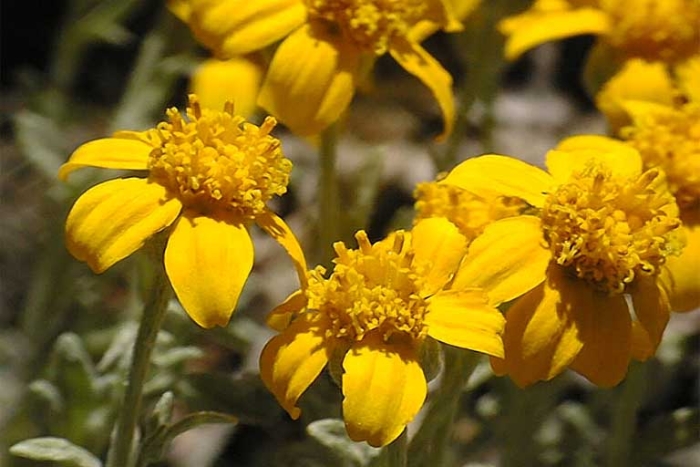Common Woolly Sunflower
(Eriophyllum lanatum)
Common Woolly Sunflower (Eriophyllum lanatum)
/
/

Larry Blakely
Public Domain




































































Estimated Native Range
Summary
The Common Woolly Sunflower is valued for its drought tolerance and ability to thrive in poor soils, making it an excellent choice for xeriscaping and naturalistic plantings. It is also used in restoration projects and as an ornamental in rock gardens and borders due to its attractive foliage and cheerful flowers. This plant prefers full sun to part shade and requires minimal water once established, thriving in well-drained soils. While it is generally low-maintenance, it can be susceptible to root rot if overwatered or planted in poorly drained soils.CC BY-SA 4.0
Plant Description
- Plant Type: Herb
- Height: 1-2 feet
- Width: 1-2 feet
- Growth Rate: Moderate
- Flower Color: Yellow
- Flowering Season: Spring, Summer, Fall
- Leaf Retention: Semi-deciduous
Growth Requirements
- Sun: Full Sun, Part Shade
- Water: Low
- Drainage: Fast
Common Uses
Bank Stabilization, Bee Garden, Bird Garden, Border Plant, Butterfly Garden, Deer Resistant, Drought Tolerant, Groundcover, Low Maintenance, Potted Plant, Rock Garden, Showy Flowers, Street Planting
Natural Habitat
Native to dry open forests, grasslands, and rocky outcrops in the Western United States
Other Names
Common Names: Oregon Sunshine , Woolly Eriophyllum , Common Woolly-Sunflower , Ériophylle Laineux , Ullblad , Woody Eriophyllum , Woolly Daisy
Scientific Names: Eriophyllum lanatum , Eriophyllum caespitosum , Bahia lanata , Eriophyllum lanatum var. typicum , Eriophyllum multiflorum , Eriophyllum harfordii , Eriophyllum superbum , Eriophyllum speciosum , Eriophyllum gracile , Eriophyllum cineraria
GBIF Accepted Name: Eriophyllum lanatum (Pursh) Forbes